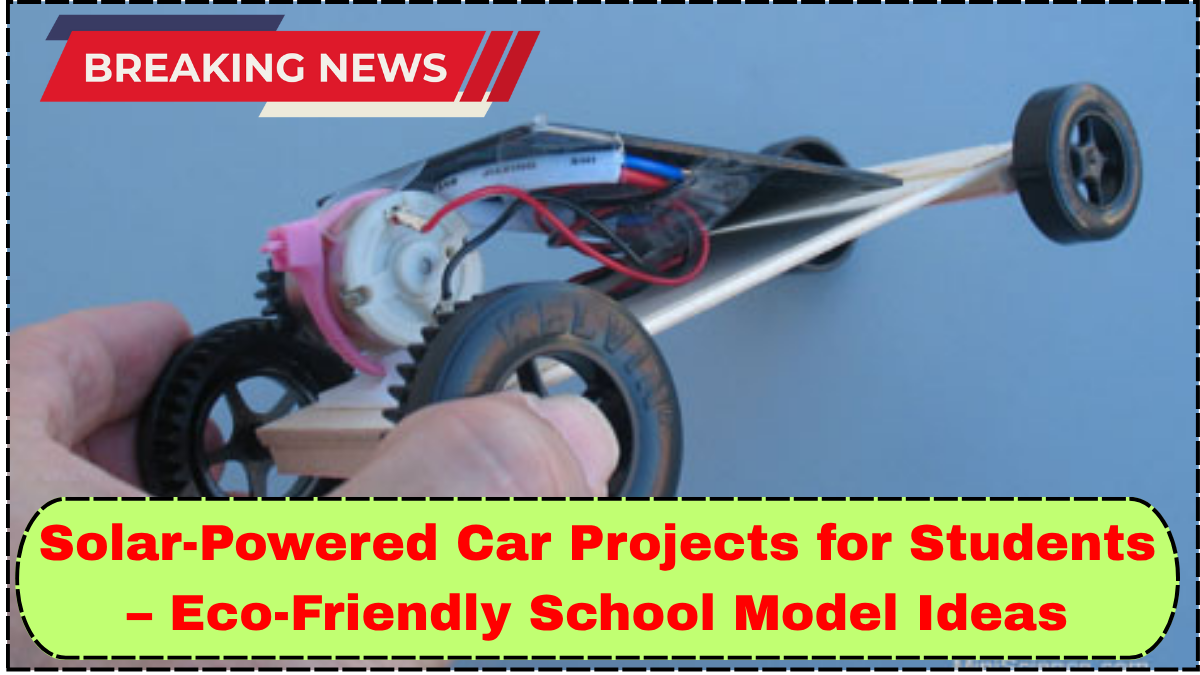The growing emphasis on sustainability has made solar-powered car projects for students an increasingly popular choice for school science fairs and classroom demonstrations. These projects not only introduce young minds to the core principles of renewable energy and engineering, but also encourage creativity and problem-solving. With the right approach, a solar-powered car model becomes more than just a project—it turns into a meaningful exploration of real-world green technology.

Why Choose a Solar-Powered Car Project?
Choosing a solar-powered car project for students offers a host of educational benefits. It blends science, technology, engineering, and mathematics (STEM) in a hands-on and accessible way. Here’s why it’s a smart pick:
-
Real-World Relevance: As the world transitions toward renewable energy, understanding solar power is increasingly vital.
-
Interactive Learning: Building and testing a solar car encourages experimentation, observation, and iteration.
-
Environmental Awareness: These projects promote the green energy concept, helping students appreciate the importance of sustainable alternatives.
Key Components of a Solar-Powered Car Model
To build an effective model, students should understand the core components:
-
Solar Panel: Captures sunlight and converts it into electrical energy.
-
Motor: Receives power from the panel and drives the wheels.
-
Chassis: The frame or body that holds everything together—often made from lightweight materials like cardboard, plastic, or balsa wood.
-
Wheels and Axles: Ensure smooth motion and balance.
Each part must be chosen with care to maximize efficiency, especially the panel-to-motor connection, which is critical for movement.
Creative Ideas for School Science Fair Models
Here are some exciting variations of the solar-powered car project for students that can make a splash at any science fair model presentation:
1. Recycled Material Solar Car
Encourage sustainability by constructing the chassis from discarded items like bottle caps, old CDs, or takeout containers. This adds an eco-friendly twist to the project while promoting recycling.
2. Obstacle Navigation Car
Incorporate sensors or guide wheels to help the solar car navigate around small obstacles or follow a defined path. This introduces elements of robotics and advanced engineering.
3. Speed Comparison Model
Create multiple cars using different panel sizes or materials and test which combination results in the fastest vehicle. This demonstrates the impact of design choices on performance.
4. Incline Performance Test
Test the vehicle’s performance on inclined surfaces. This version focuses on understanding torque, friction, and how solar output affects motor strength.
Enhancing the Educational Value
To make the project more comprehensive, students can document:
-
Solar Irradiance Logs: Track how sunlight intensity changes throughout the day and how it affects car performance.
-
Efficiency Calculations: Measure how much energy is generated and how far it propels the vehicle.
-
Design Iteration Reports: Explain what changes were made between versions and why.
Teachers can incorporate presentations where students explain the green energy concept and how their model contributes to it. This deepens understanding and improves communication skills.
Safety and Budget Tips
-
Safety First: Ensure that all electrical connections are secure and that no short-circuit risk exists.
-
Low-Cost Alternatives: For schools with limited budgets, small solar cells and motors can be purchased in kits or salvaged from solar-powered garden lights.
FAQs: Solar-Powered Car Projects for Students
Q1: What is the best size for a solar panel on a student car model?
A: A panel between 1.5V and 3V is typically ideal for small motors and lightweight car designs used in student projects.
Q2: Can the solar-powered car run indoors?
A: Not efficiently. These cars require direct sunlight or strong artificial light sources that simulate sunlight.
Q3: How does this project support the green energy concept?
A: It educates students on converting solar energy into mechanical power, showcasing a clean and renewable energy alternative to fossil fuels.
Q4: What grade level is this project suitable for?
A: It can be tailored for elementary through high school. Complexity can increase with age, such as adding sensors, multiple gears, or programmable components.
Q5: Are there any science fair competitions that accept solar-powered models?
A: Yes, many regional and national science fairs welcome projects involving renewable energy and sustainability, making this a competitive and relevant entry.
click here to learn more